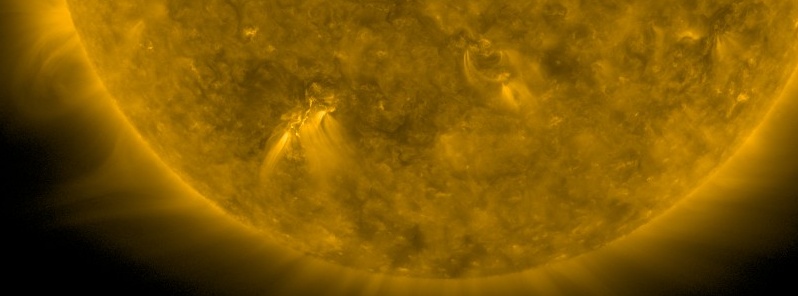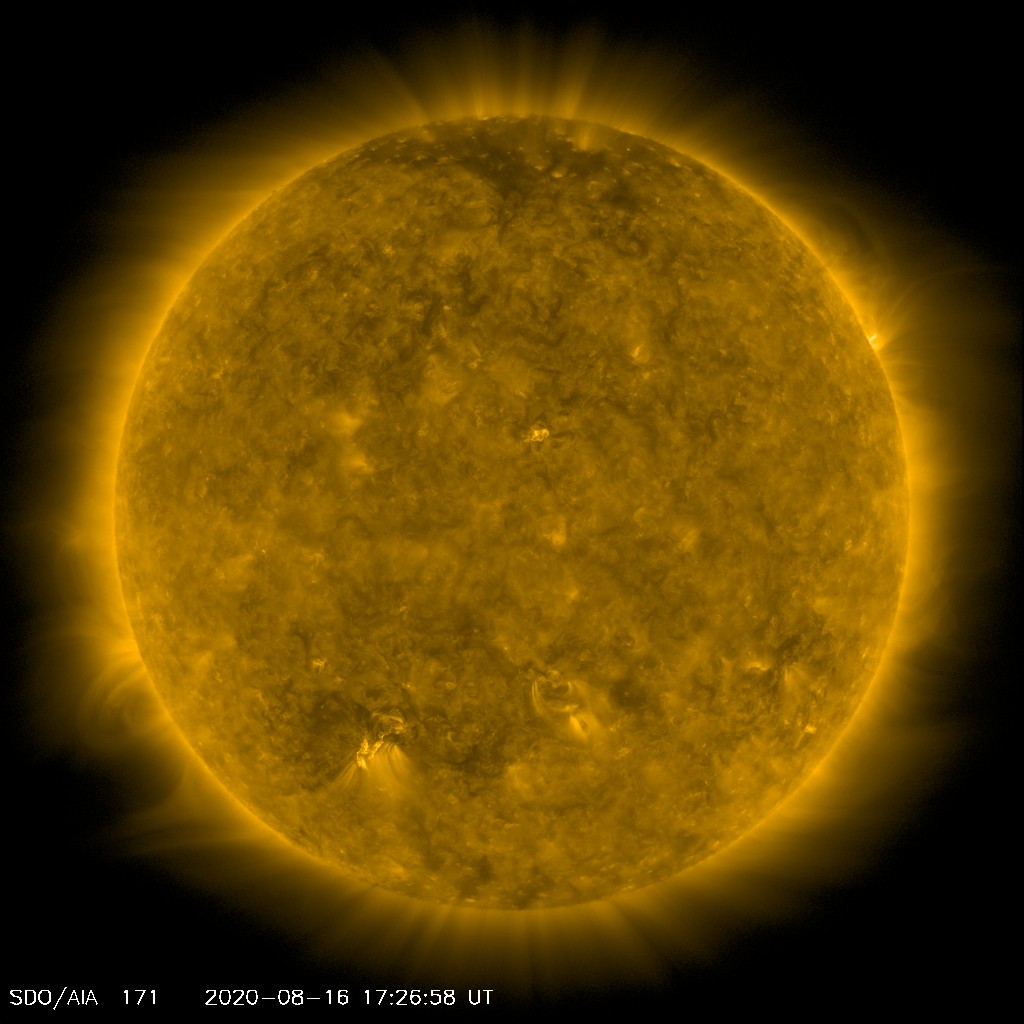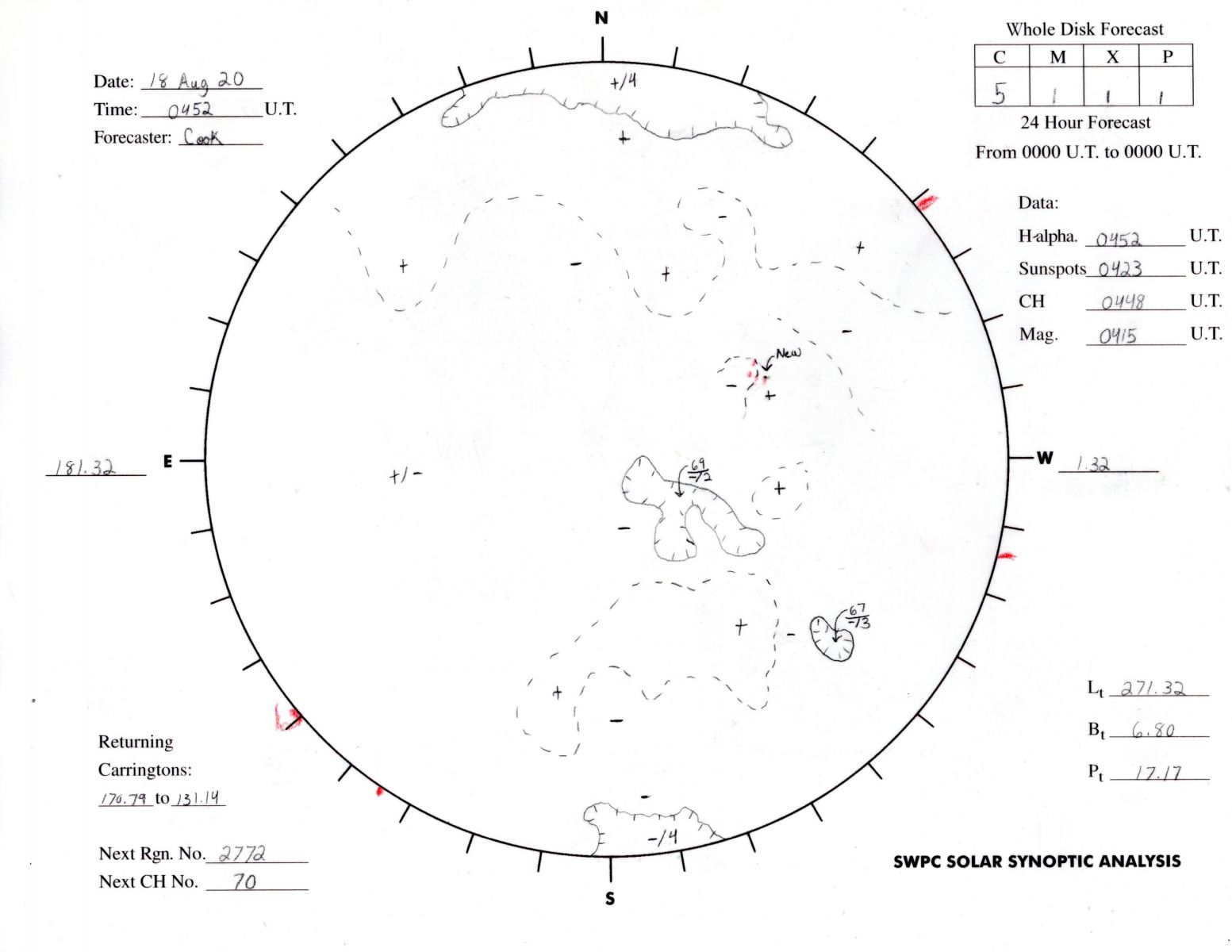Glancing-blow expected after weak B1.2 solar flare

A weak solar flare measuring B1.2 at its peak erupted on August 16, 2020, producing a coronal mass ejection (CME). Consensus model results suggest an arriving glancing blow on August 20 — producing unsettled to active geomagnetic field conditions, with a chance for G1 – Minor storm levels. The flare started at 17:12, peaked at 17:26, and ended at 17:36 UTC.
A coronal dimming near S30E30 was observed in GOES-16 SUVI 195 imagery around 17:00 UTC on August 16. An associated CME signature was observed in STEREO-A COR2 coronagraph imagery beginning at 18:24 UTC, according to the SWPC.
The source was a plage region located in the southeast quadrant.

.png)
Meanwhile, solar activity is at a very low levels and there are currently no spots visible on the solar disk, although a pore had developed at approximately N18W20 over the past 24 hours.
Very low activity is expected to continue through August 20.


Over the past 24 hours, the greater than 2 MeV electron flux reached moderate levels and the greater than 10 MeV proton flux maintained background values.
Solar wind parameters were indicative of a slow regime and likely proximity to the heliospheric current sheet (HCS). Total interplanetary magnetic field (IMF) strength was variable at primarily 4 to 7 nT during the same period.
The Bz component underwent mainly northward deviations. Solar wind speed peaked at 340 km/s at 07:29 UTC on August 17, but decreased to around 300 km/s afterward. The phi angle was variable between sectors.
A slow solar wind regime is anticipated to continue over the next 24 hours, but with a mildly disturbed IMF due to likely HCS proximity on August 18.
Weak influences from a small, isolated negative polarity coronal hole high speed stream (CH HSS) may lead to a minor solar wind speed increase later on August 18 into 19.
The anticipated arrival of a glancing blow from the August 16th CME early to mid-day on August 20 is expected to enhance the total IMF strength and cause a modest increase in solar wind speed — unsettled to active geomagnetic field conditions are expected, with a chance for G1 – Minor storm levels.
Featured image credit: NASA SDO/AIA 171, acquired at 17:06 UTC on August 16, 2020.

Commenting rules and guidelines
We value the thoughts and opinions of our readers and welcome healthy discussions on our website. In order to maintain a respectful and positive community, we ask that all commenters follow these rules.